Acrylic paint is a great choice to produce impasto or textured art, but sometimes it can be frustrating when the paint is too thin and runs off the canvas or doesn’t provide enough coverage.
Whether you’re a beginner or an experienced painter, learning how to make acrylic paint thicker is an essential skill to have in your toolkit.
You can make acrylic paint thicker by using various methods. You may add a thickening agent, acrylic medium or gesso. Additionally, you may go for some cost-effective alternatives like adding cornstarch, flour or baking soda.
Not only these, but there are other strategies and techniques you can apply to make your paint fluffy. However, keeping the right ratio is crucial. So read the article thoroughly.
In this blog, we will explore some of the most effective methods for thickening acrylic paint to help you achieve the desired results in your paintings.
What Are The Uses And Benefits of Thicker Acrylic Paint?
Thickening acrylic paint can offer a range of advantages depending on the required effects and applications. Here are some of the reasons why you choose to make the paint thicker.
- Texture In Your Painting
Thickening acrylic paint can create a textured surface when applied with a brush or palette knife, adding depth and interest to a painting.
- Impasto Effects
It is possible to create impasto effects – heavily layered paint that can create dramatic three-dimensional effects by making your paint thick.
- More Control
A thicker paint gives you more control over your paint strokes and the overall application, as the paint is less likely to run or drip.
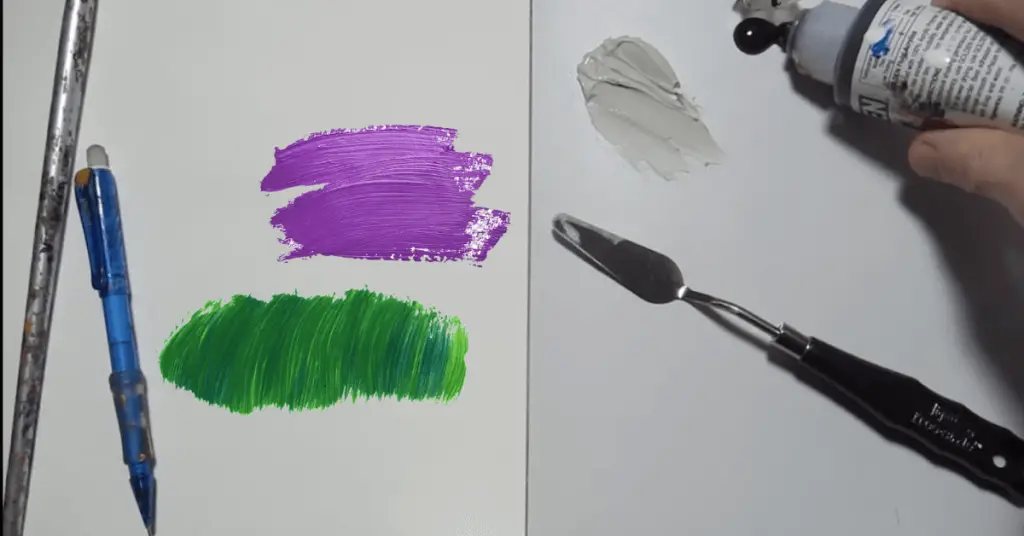
- Various Applications
Thickened acrylic paint can be used for a variety of techniques, including glazing, layering, and scumbling.
- Cost savings
Adding a thickener to acrylic paint can help extend its life by preventing it from drying out too quickly, which can help you save money on paint.
What Are The Downsides of Making Acrylic Paint Thicker?
Although fluffy paint can provide you with various benefits, it cannot be good for some techniques, painting styles, or effects. Some of the downsides are as follows.
- Longer Drying Time
The thick acrylic painting will take longer to dry, which can be inconvenient if you need your painting to be finished quickly.
- Brushstrokes
When you make acrylic paint thicker, it can create more visible brushstrokes on the surface of your painting, which is not a good practice.
- Mixing Difficulty
Thicker paint can be more difficult to mix with other colours, especially if the paint is too thick to spread easily. Moreover, the paint may not be merged completely.
- Reduced Transparency
When acrylic paint is thickened, it can become less transparent, making it harder to achieve the translucent effects that are often aimed at painting. But there are many ways to make acrylic paint transparent.
- Cracking
Thick layers of acrylic paint can be more prone to cracking as they dry. This is because the paint may dry on the surface more quickly than it does deeper down, causing tension between the layers. However, these cracks in your acrylic painting can be fixed.
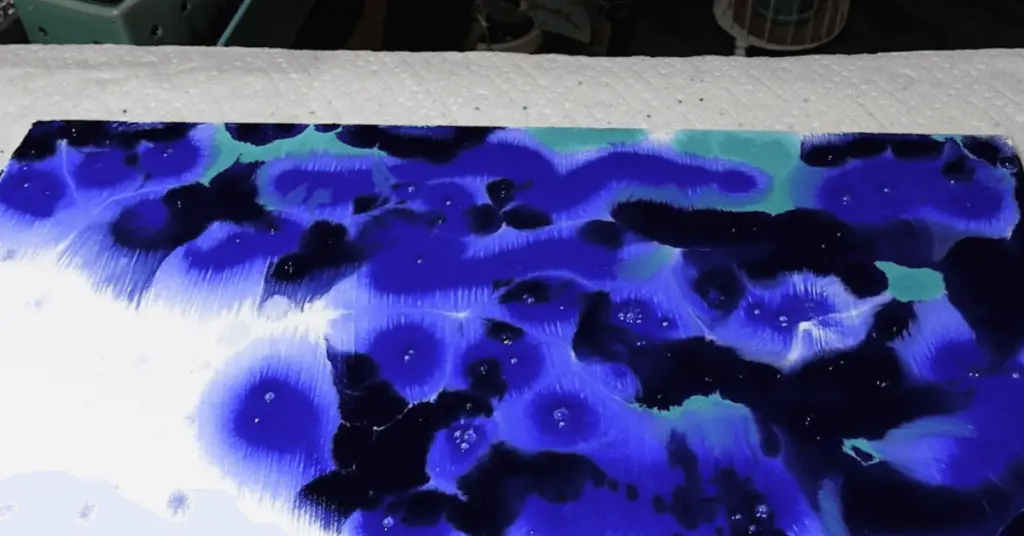
How To Thicken Acrylic Paint? 2 Professional Techniques
Sometimes we need to make our paint heavy and fatty, and you might be asking yourself, what can I add to acrylic paint to thicken it up? Well, there are some professional ways you can apply for this purpose.
1. By Adding Thickening Agents
Fortunately, there are mediums that can be added to acrylic paint to make it thicker and more suitable for certain painting techniques.
Acrylic paint mediums are essential additives that are mixed with acrylic paint to alter their properties, such as texture, transparency, and drying time.
What mediums make acrylic paint thicker? Well, there are several different types of mediums available that can be used to thicken acrylic paint, including gel mediums, moulding pastes, and texture gels.
- Gel Medium
Using thickening gel for acrylic paint is perhaps the most commonly used method. They are available in a range of viscosities, from soft gels that add minimal thickness to heavy gels that can significantly increase the texture of the paint.
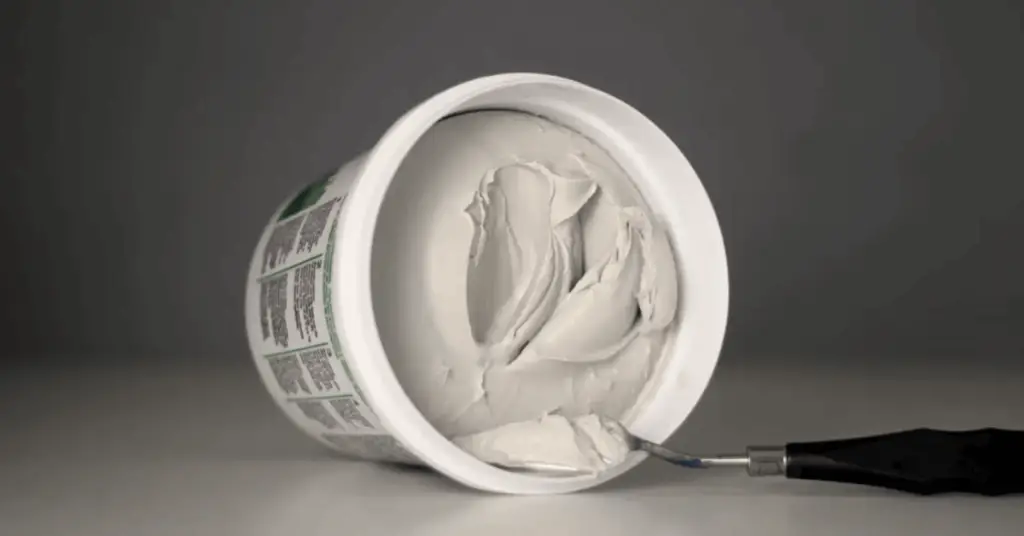
Gel mediums are made from acrylic polymers and are translucent when dry, which means they can be used to create a glaze or add texture without altering the colour of the paint.
- Molding Pastes
Molding pastes are another type of medium that can be used to thicken acrylic paint. They are made from a combination of acrylic polymers and marble dust or other inert materials.
Molding pastes are thicker than gel mediums and can be used to create heavy impasto effects or to create three-dimensional textures on the surface of a painting.
- Texture Gel
Texture gels are a type of medium that is specifically designed to add texture to acrylic paint. They are available in a range of textures, from fine sands to coarse pumice, and can be used to create a wide variety of surface effects.
These acrylic paint thickeners are made from a combination of acrylic polymers and additives, and they can be tinted with acrylic paint to match the colour of the painting.
How To Thicken Acrylic Paint With Mediums?
To use a medium to thicken acrylic paint, simply mix the required amount of medium into the paint until it reaches the desired consistency.
It’s important to follow the manufacturer’s instructions and not add too much medium, as this can affect the drying time and stability of the paint.
It’s also a good idea to test the paint on a small area before using it on a larger painting to make sure the consistency and texture are what you want.
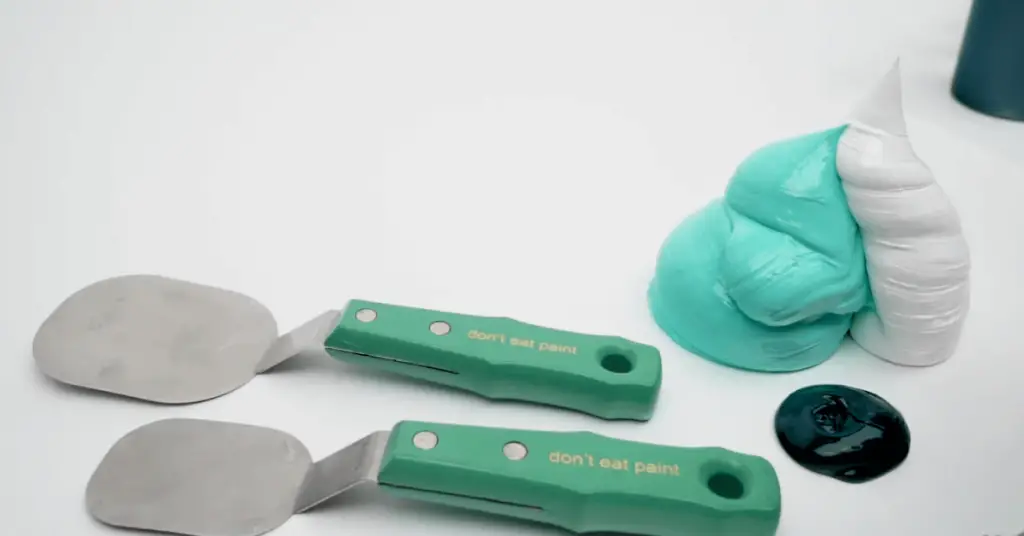
2. By Adding Gesso
Gesso is a type of primer made of a mixture of chalk, gypsum, and binder (usually acrylic). It is generally used to prime canvases or other surfaces before painting to produce a smooth and even surface for paint application.
Does gesso thicken acrylic paint? Adding gesso to acrylic paint is an effective way to make it thicker and more textured. However, it is important to experiment with different ratios of gesso to paint to achieve the consistency you want.
It is available in both white and clear formulations, and the clear gesso can be mixed with acrylic paint to create a thicker consistency.
How To Make Thick Paint With Gesso?
Step 1: Mix a small amount of clear gesso into your acrylic paint. Begin with a 1:1 ratio of gesso to paint, and adjust the proportions as needed to achieve the desired consistency.
Step 2: Use a palette knife or a mixing stick to blend the acrylic paint and gesso thoroughly. Mix until the gesso is evenly distributed throughout the paint and there are no lumps or clumps.
Step 3: Test the consistency of the paint on a scrap piece of paper or canvas. If the paint is still too thin, add more gesso in small amounts until you reach the desired thickness.
| Tips and Cautions: Please be focused while using gesso because adding it to acrylic paint will affect its colour and transparency. White gesso will lighten the colour of the paint, while clear gesso will not affect the colour as much. Once you have achieved the desired consistency, you can use the paint as you normally would. Keep in mind that the addition of gesso may also affect the drying time of the paint. |
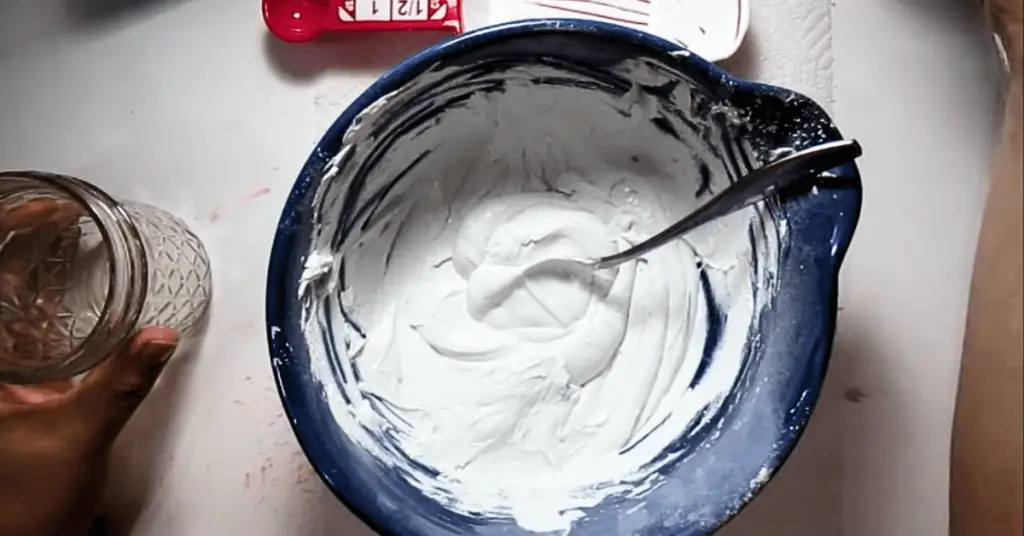
How To Thick Acrylic Paint At Home?
If the methods discussed above don’t suit you or you’re not interested in spending money on mediums or thickening agents, there are some alternative DIY ways to give thickness to your acrylic paint.
Some of the techniques on how to make acrylic paint thicker at home are as follows:
1. Using Flour
Flour is a common household item we use to make the dough and is an essential food source. But have you ever thought that you could utilise it to solve your art requirements?
Adding flour to acrylic paint is a simple and affordable way to thicken it for your art projects. Here is a step-by-step procedure on how to make paint thicker with flour.
Supplies You’ll need
- Acrylic paint
- Flour
- Mixing bowl or container
- Stirring tool
Procedure
Step 1: To thicken paint with flour, start by pouring a small amount of acrylic paint into a mixing bowl or container. You can add more later if needed, but it’s better to start with a small amount to avoid wasting paint.
Step 2: Add a small amount of flour to the paint. You can use any type of flour, but all-purpose flour is the most commonly used. Start with a 1:1 ratio of paint to flour and mix well with a stirring tool.
Step 3: Continue adding flour in small amounts and mixing well until you reach the level of thickness you need. Be careful not to add too much flour, as it can cause chunks and affect the paint’s consistency.
Step 4: Once you’ve attained the desired thickness, let the paint sit for a few minutes to allow the flour to fully integrate with the paint. You can then start using it as you would normally.
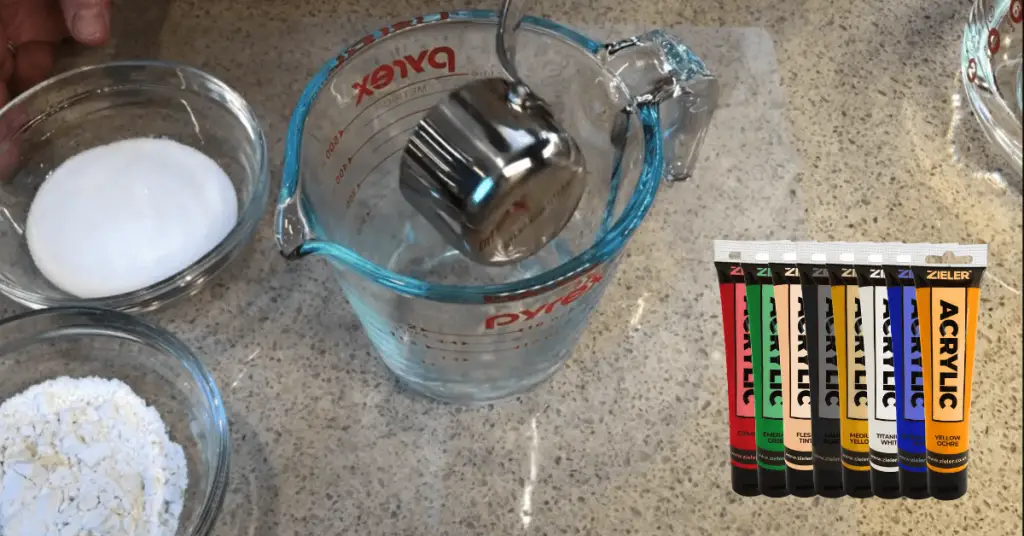
| Tips If you feel that the paint is still too thick after adding flour, you can add a small amount of water to thin it out again. |
2. Using Cornstarch
Cornstarch is a fine, white powder that is made from the starch of corn kernels. It is normally used as a thickening agent in cooking and baking, as well as in the manufacturing of various products.
When cornstarch is mixed with a liquid and heated, the starch granules absorb the liquid and swell, forming a thick, smooth consistency. This makes it useful in thickening your paint.
Here is a complete process on how to thicken paint with cornstarch.
Supplies Needed
- Acrylic paint
- Cornstarch
- Mixing bowl
- Mixing utensil
- Water (optional)
Procedure
- Begin by preparing the acrylic paint you want to thicken. Squeeze out a small amount of paint into a mixing bowl.
- Next, add a small amount of cornstarch in acrylic paint. Start with a ratio of 1:1 (equal parts of paint and cornstarch). It’s best to add the cornstarch slowly while stirring continuously to avoid clumps.
- Mix the paint and cornstarch thoroughly until the mixture is smooth and there are no lumps.
- If the mixture is too thick, you can add a small amount of water to thin it out. Add water gradually while stirring continuously until the desired thickness is reached.
- Test the paint by applying it to a surface using a brush or other tool. If the paint is still not thick enough, you can add more cornstarch and repeat the process.
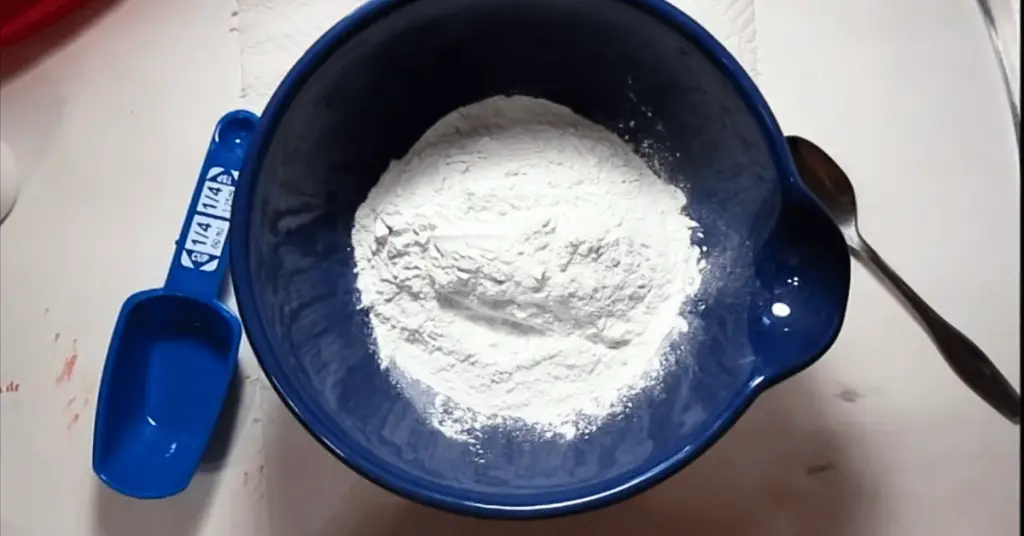
| Tips Paint that has been thickened with cornstarch may not adhere well to certain surfaces, so it’s a good practice to check the paint on the surface before using it for a finished piece. |
How To Thicken Acrylic Paint For Impasto
Impasto art is my favorite, and I really love creating textured paintings, but as artists, we know that we require the paint to be thicker and semi-hard to get those clear marks. So how to make thick acrylic paint for this purpose?
Although the best thing you can do is to use the thickening medium for acrylic paint to get them fat, but if you want to try something new, you can go for some alternative products as follows.
Talcum powder can be used to thicken acrylic paint for palette knives so that you produce impasto effects. However, it is important to note that talcum powder can affect the color of the paint, making it appear lighter or duller. In addition, there is another way that uses sand.
But how to thicken paint with sand? Mixing acrylic paint with sand or pumice can create a thick, textured paint that is ideal for impasto techniques. But make sure you use fine-grain sand or pumice to avoid damaging your painting surface.

Can You Use Baby Powder For Thickening Acrylic Paint?
I would not recommend using baby powder to thicken acrylic paint because I had tried it once and found it not as effective as I expected.
While it may seem like a quick and easy solution, there are several potential issues to consider.
It does not mix evenly with the paint, leading to lumps or clumps that can affect the texture and appearance of your painting. However, there are various ways to fix those lumps in your acrylic painting.
Additionally, baby powder is not an archival material, meaning it may not hold up over time and could lead to cracking or deterioration of your artwork.
Moreover, it may also affect the drying time of the paint, making it tough to achieve the desired effects.
FAQs
Can you thicken acrylic paint with glue?
Yes, you may use glue for thickening your paint but keep in mind it can alter the drying time and sticking nature of the paint. However, if you go for it, choose white school glue so that the colour of the paint is not affected.
How to make acrylic paint thicker without cornstarch?
There are many ways you can thicken acrylic paint without even using cornstarch. Some of these include adding gesso, talcum powder, baking soda, or flour.
How do you make pouring paint thicker?
You can apply many strategies to make pouring paint thicker, but I suggest you use acrylic mediums or thickening agents like molding paste or texture gel.
How to make your paint thicker?
You can make your paint thicker by adding an appropriate amount of paint thickeners and then mixing it well to homogenize the mixture.
What to add to acrylic paint to make it thicker?
You can add specific substances known as gel mediums for this purpose. An affordable way is using flour or cornstarch as an alternative.
Concluding
I hope you’re now well familiar with how to make acrylic paint thicker. Keep in mind that adding any additional ingredient to paint can definitely modify the original paint properties but they are minimal depending on what product you are putting in the paint.
Thank You!
- How To Buff Acrylic Enamel Paint In 5 Easy Steps? - February 2, 2024
- How To Make Acrylic Paint More Opaque? 10 Effective Methods - February 1, 2024
- How To Sketch On Canvas Before Acrylic Painting? Draw Like a Pro - January 31, 2024

